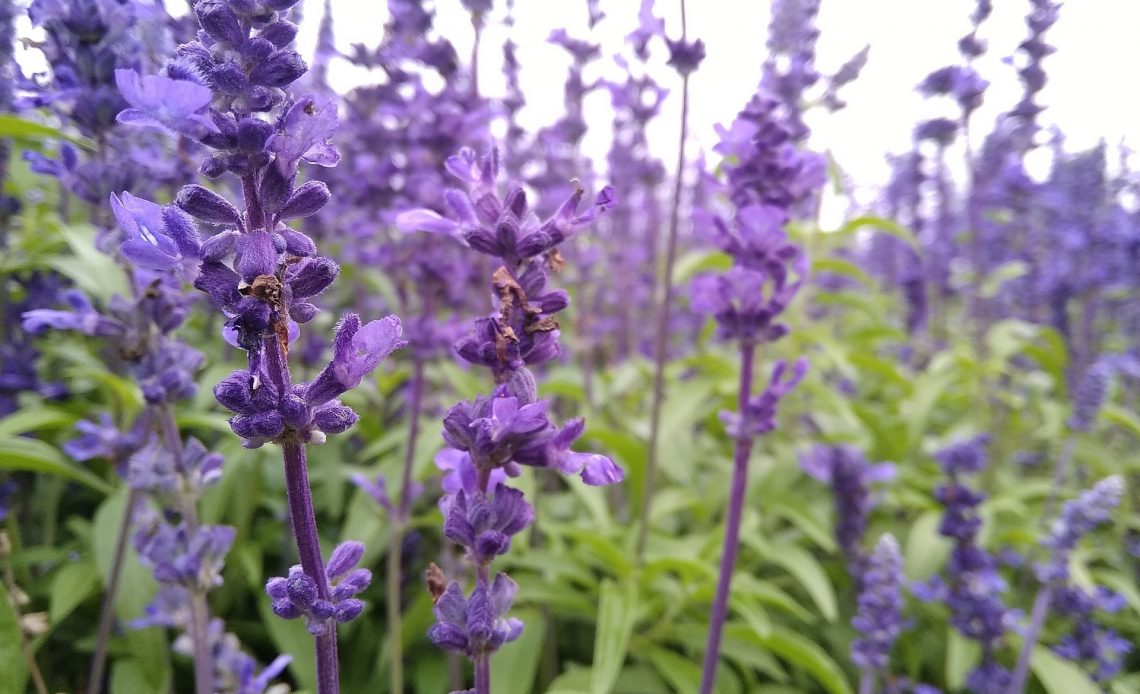

We’re here to help! Wild Yards is a completely free website that is 100% dedicated to helping you create a wildlife-friendly, sustainable yard. Read more
WildYards is reader-supported. When you buy a product through a link on our site, we may earn a comission. Every product is independently selected by our (obsessive) editors and our reviews are unbiased and objective. Read more about our mission or our privacy policy.
Lavender is a gorgeous flowering herb native to the hot, dry Mediterranean region. It’s prized for its gentle scent and delicate blooms that appear during the warm summer months. Lavender gives a garden an air of refinement, but this picky plant can be difficult to grow as it is very susceptible to root rot. This begs the question, are there any plants that look like lavender but are easier to grow?
Yes, there are a number of plants that resemble lavender, and, fortunately, they’re all fairly easy to grow. If you’ve never been very good at keeping lavender alive, consider giving one of these plants that look like lavender a try instead.
What does lavender look like?
Lavender is an herbaceous perennial flowering shrub with soft gray-green leaves and tall purple flowers. It’s incredibly fragrant and well-suited to adverse conditions that would make many other flowering plants die. Because this plant is both exquisite and hardy, it’s a longtime favorite among backyard herb gardeners and professional landscapers alike.
There are more than 450 different varieties of lavender, with English and French cultivars being the most popular. In ideal conditions, these shrubs can live more than a decade, with stems becoming woodier over time. Mature plants measure about three feet tall by about two feet wide, but they can be clipped back to a more manageable size.
Lavender can be grown in containers, as part of a patio herb garden, or in long rows of hedges to create a dramatic effect. Because it likes well-drained soil, it does very well in pots. When grown on porches and decks as accent plants, they draw the attention of many valuable pollinators, including bees and butterflies.
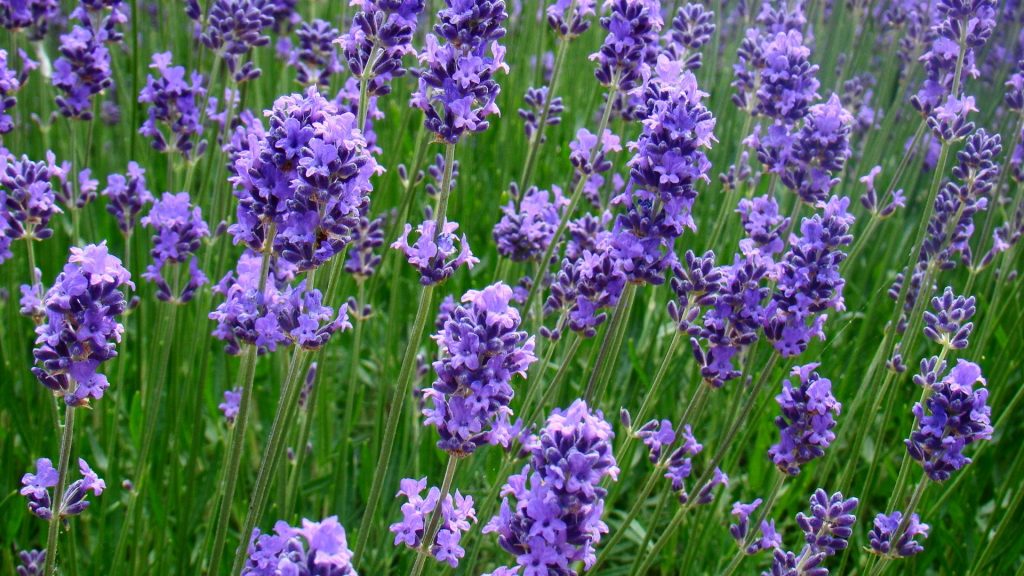
What does lavender need to grow?
Lavender’s sprays of graceful flowers may trick you into thinking that this shrub is a diva. But really, it can take care of itself just fine. This plant doesn’t need to be doted on. It likes to be left alone. We cannot stress this enough — give your lavender everything it needs then get out of its way.
Lavender should be planted in sandy soil in a place where it receives full sunlight. It likes to be watered once every other week or so when the soil has been allowed to dry out completely. And it needs to be placed in a well-ventilated area to help keep humid conditions at bay. These are the fundamental principles of growing lavender.
Because it’s fuss-free and thrives when neglected, and because it can grow in arid climes where many plants can’t, this herb is considered to be good for beginning gardeners. But growing lavender successfully remains an elusive task, for many skilled growers, which brings us to our next topic of discussion.
Why grow plants that look like lavender instead of the real deal?
Lavender is said to be easy to grow, but it could more accurately be described as a plant that thrives in poor conditions. If you can’t give it those poor conditions, the worst-case scenario is that it will die. The best-case scenario is you’ll have an uphill battle preventing it from dying.
Rich soils that retain moisture — soils that are full of nutrients and organic matter — will set your lavender up for root rot. Fertilizing it will change the pH of the soil to undesirable levels. Watering it a few too many times will be the last straw. And once your lavender shows signs of overwatering, it probably won’t recover.
Lavender can be incredibly finicky. And yet, it is undeniably beautiful. It’s just as pretty growing in decorative pots as it is nestled in with other plants in your flowerbeds. So what’s a gardener who absolutely loves lavender supposed to do if they’re simply no good at growing it? The only logical solution is to pick plants that look like lavender but are easier to manage.
Which plants look like lavender?
If it’s starting to look like you and lavender simply aren’t meant to be, it’s time to start exploring your other options. As it turns out, there are quite a few plants that look like lavender to choose from. There’s a lavender alternative to suit any garden with any type of soil in any region.
Mealycup Sage
Mealycup sage, or salvia farinacea, is a member of the mint family. Like lavender, this herbaceous shrub loves hot, dry growing conditions. It grows well in Mexico as well as the southern states of America, where the limestone-rich soils are acidic enough to support it.
Its flowers, which range in color from blue to purple, look very similar to lavender flowers. The blooms hang in clusters at the tips of long stems. Mealycup sage is popular with pollinators, especially bees, who feed on the plant’s rich supply of pollen and nectar. This makes it a great plant for dressing up your garden and keeping the bugs happy. Although, fair warning, it can attract crab spiders, too.
Mealycup sage is fairly easy to grow. This plant is drought-tolerant and does not like overly-moist soils. Even though it can develop root rot over time, it’s more forgiving than real lavender if you accidentally give it too much to drink. The only downside is that, while this shrub resembles lavender when it’s in bloom, it doesn’t when it’s not. Mealycup sage has long, oval leaves that are shiny and have toothed edges. A far cry from lavender’s small, soft, understated leaves.
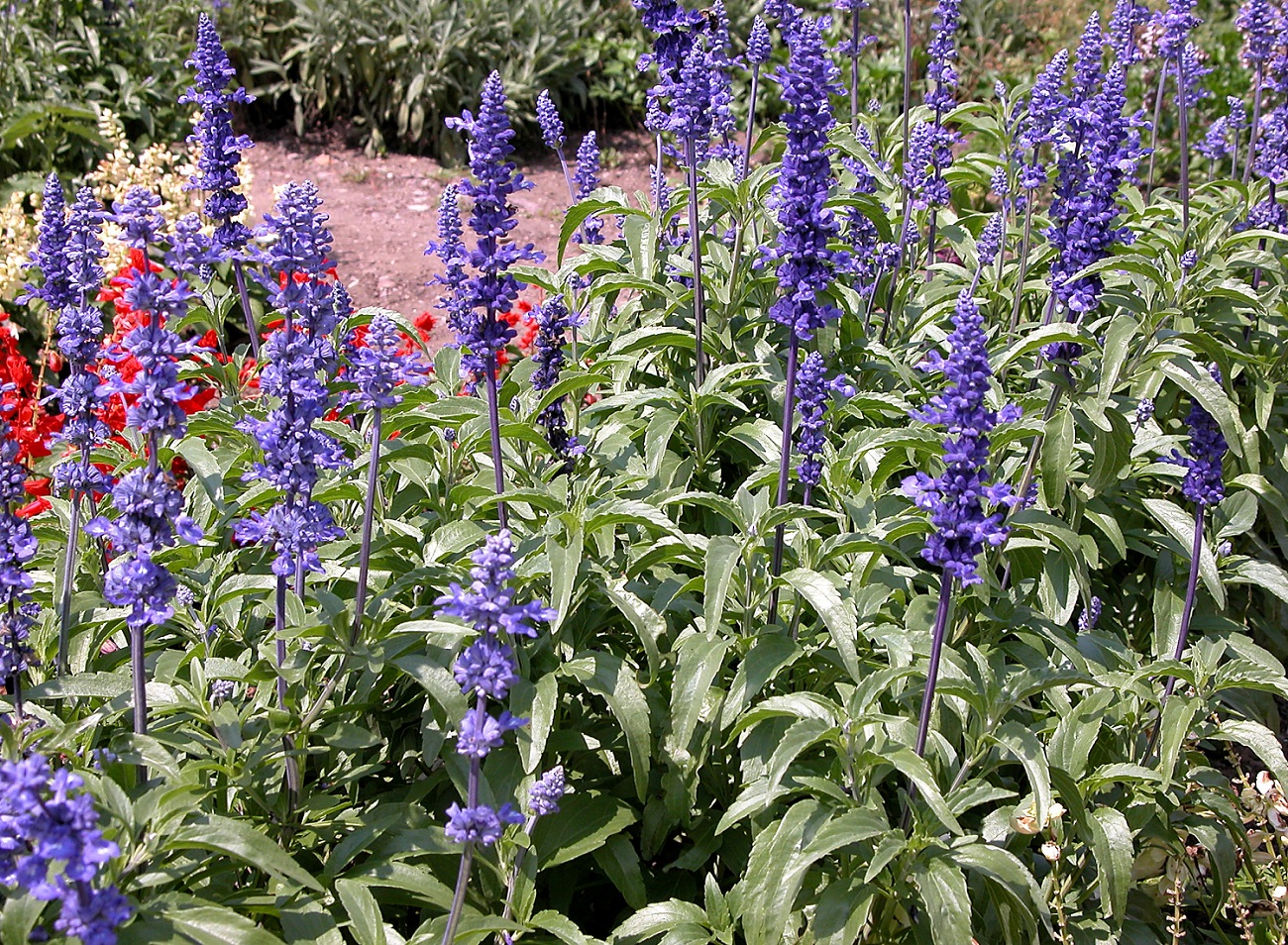
Mexican Bush Sage
If you’re looking for a plant that looks like lavender even when it isn’t blooming, Mexican bush sage is just right for you. The flowers bloom from long stems, which are great for cutting and drying. Once the flowers have died away, Mexican bush sage’s velvety gray-green leaves will convince your visitors that it’s actually lavender.
This evergreen shrub is a popular choice for fall gardeners because it blooms from late summer until the first winter freeze sets in. It produces a number of long-lasting purple flowers that feed pollinating insects when other food sources are dwindling. It’s a wonderful addition to a butterfly garden.
Mexican bush sage grows to a maximum height of four feet, which is about a foot taller than the largest lavender varieties. Like lavender, it also likes full sun, but it is more tolerant of fertile soils. So if you have loamy soil that is more alkaline, you’ll have better luck with Mexican bush sage than with real lavender.
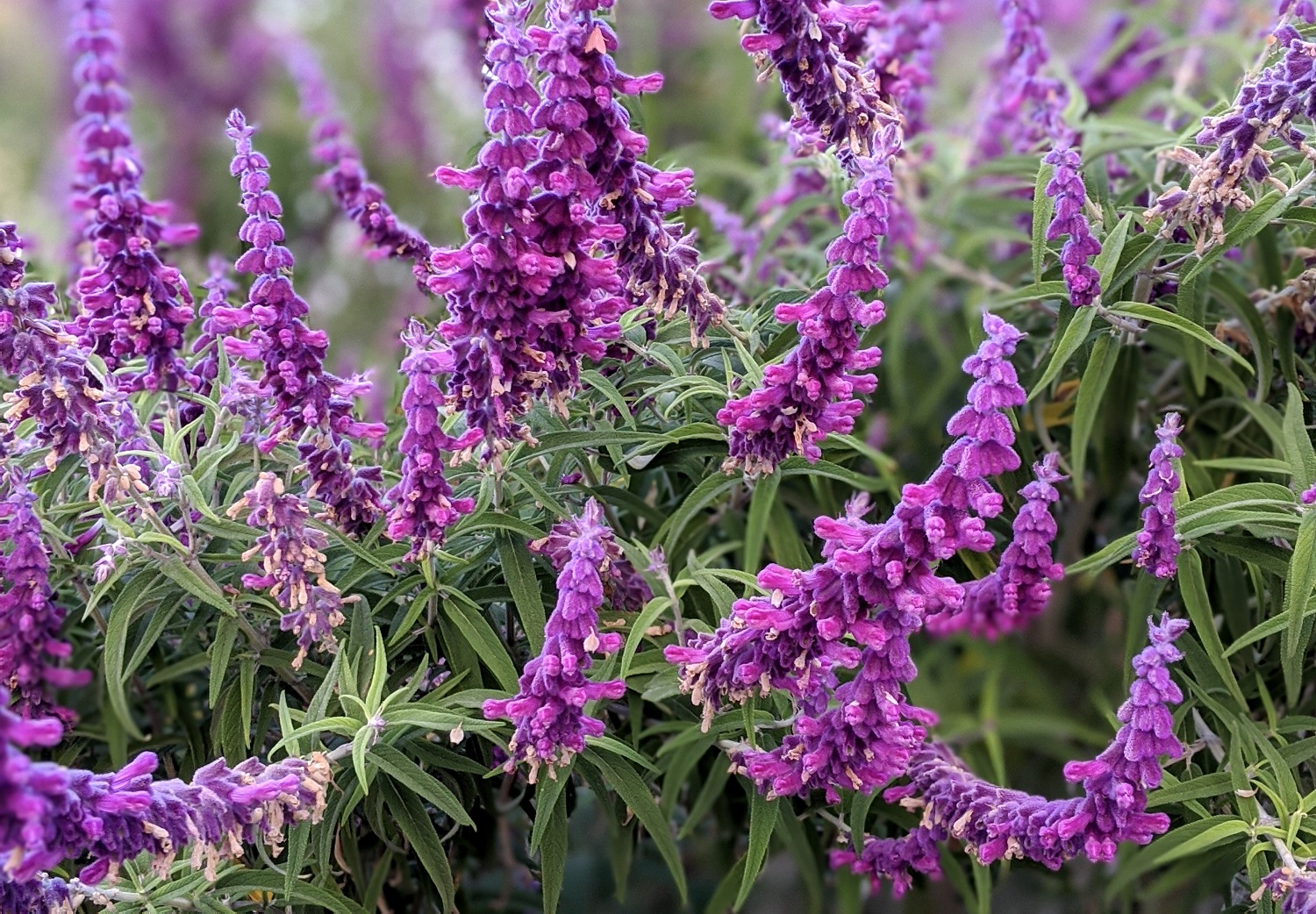
Hyssop
If you can’t grow lavender, make a lateral move and grow hyssop instead. This plant is another fragrant herb that produces purple blossoms situated at the ends of long stalks. You can find hyssop in a variety of other colors, too, including pink, blue, and red. It grows to be big and bushy, so it makes an excellent edging for your flower beds.
Hyssop plants have large root systems, so even though they can be grown in pots, they do much better in the ground. Like lavender, this plant also prefers dry soil. However, it’s more tolerant of richer soil types and actually does better in soil with lots of organic matter.
Look for purple giant hyssop. As its name suggests, this is a large plant with sizeable leaves and tall purple flowers. Mature purple giant hyssop plants can grow to be six feet tall. It makes for a stunning focal point in any garden.
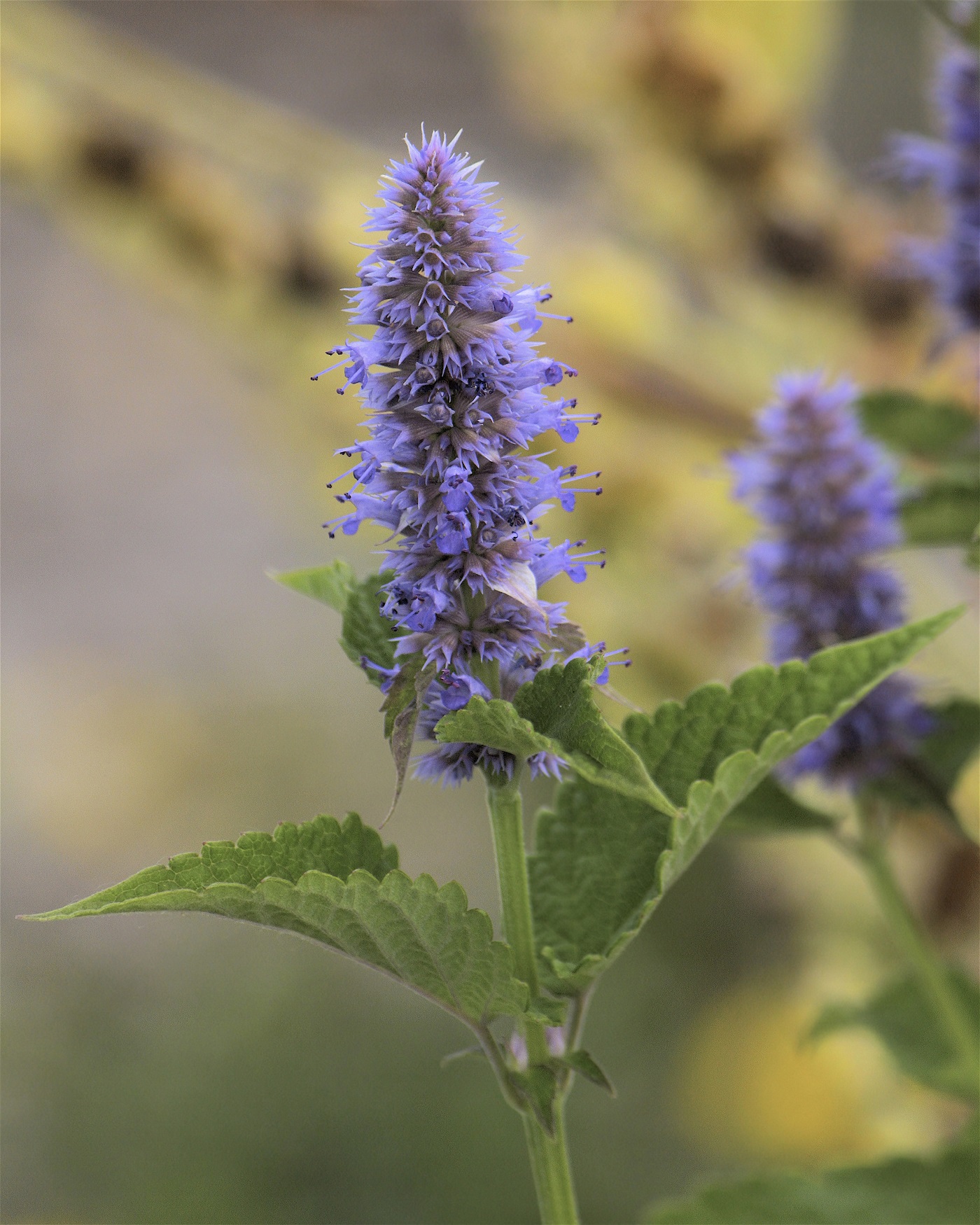
Russian Sage
Russian sage plants look so much like a variety of lavender that it can come as a surprise to find out that they’re not. Both of these plants enjoy hot, dry conditions. At three feet tall, these plants are comparable in size and Russian sage’s blue-tinted green leaves look a lot similar to lavender’s.
This is a hardy shrub. It’s tough, and if you’ve found that lavender is too sensitive to grow in your region, then tough is exactly what you need. Russian sage makes a lovely backdrop to shorter flowers in your landscaping. The aromatic flowers attract butterflies and bees, but the fuzzy texture of the plant itself repels deer and rabbits. This stuff really has it all.
If you’ve got a sunny space, your Russian sage plants should do fine. Just be sure to plant these shrubs in alkaline soils. Unlike lavender, Russian sage needs a more neutral pH to stay healthy. If your soil is on the acidic side, you may need to amend it with a little compost before planting.
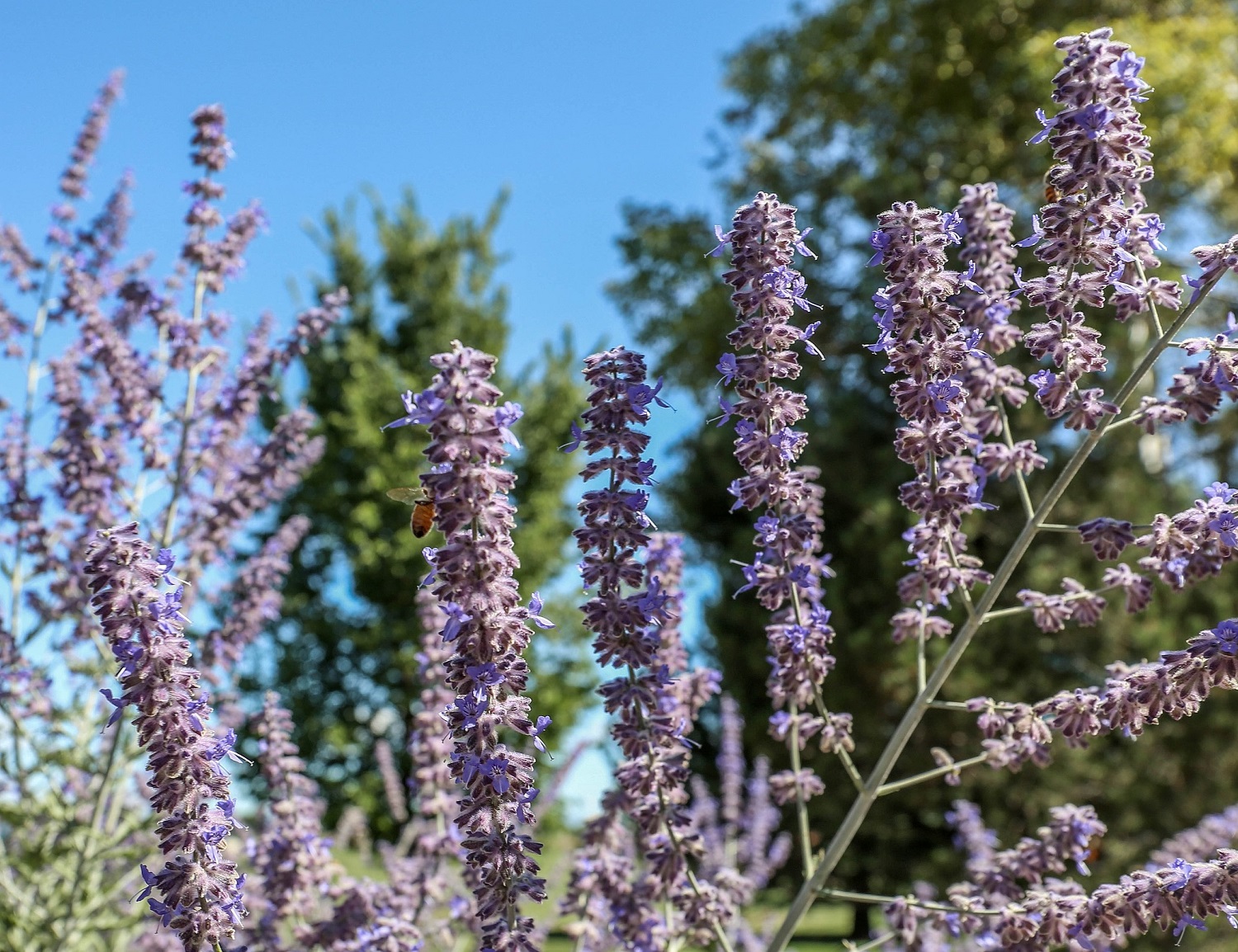
Catmint
Catmint is another plant that looks like lavender, but it grows just a bit differently. Lavender is a bush. It looks like a typical shrub. But catmint is mounding, so it acts as more of a groundcover. Instead of using it as an accent plant as you would with lavender, you can rely on catmint to fill in the empty spaces in your flower beds.
This versatile little plant also comes in yellow, blue, white, and pink, but if you’re going for a lavender look, choose purple catmint. After the plant’s initial blooming period, the dead flowers can be trimmed back to encourage even more flowers to blossom. This is one plant that will keep your local butterflies coming back for more!
As a flowering herb, catmint is pretty fragrant, which makes it popular with hummingbirds and other pollinators. It makes a stroll through your flower garden on a breezy day a real treat. Another drought-tolerant lavender alternative, catmint thrives in full to partial sunlight and does best when planted in loamy soil with plenty of organic matter.
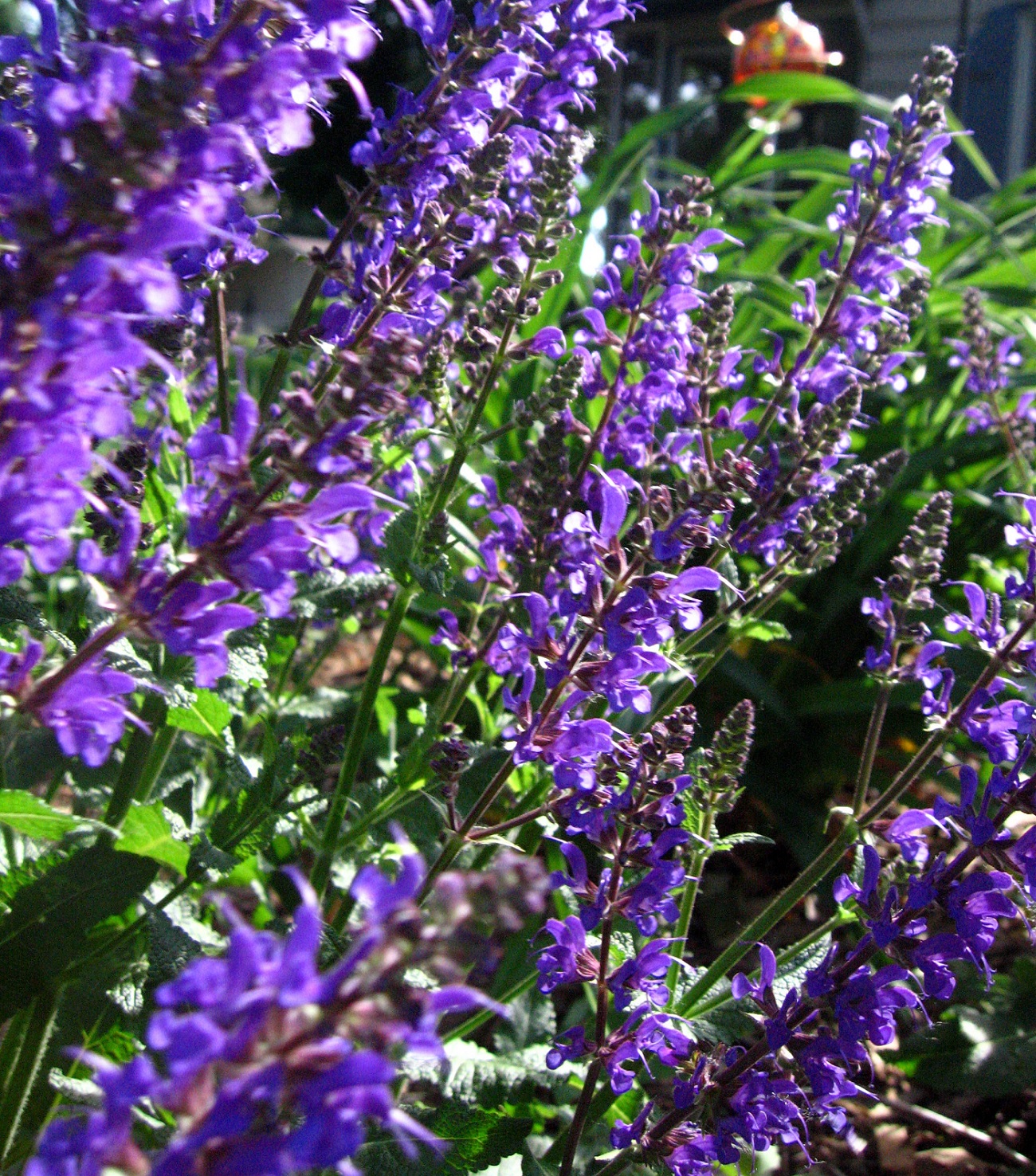
Rosemary
If you want a fragrant flowering herb that’s easy to grow, rosemary has got lavender beat by a country mile. Rosemary is hardy stuff. It likes sandy, dry soil, the same as lavender. And it needs at least six hours of sun every day to be happy. But it’s much more lenient than lavender if you give it something it doesn’t like. You can make a few mistakes with rosemary and it won’t hold it against you. Not so with lavender.
Rosemary is a culinary shrub that’s beloved for its aroma and its sweet yet savory taste. Its needle-like leaves are full of oil, perfect for making essential oils and even repelling some insects. Rosemary is also a potent herbal home remedy for hair loss and can be added to shampoos and conditioners to help encourage hair growth.
This is a steady-growing, reliable plant. Although it prefers slightly sandy soil, it can manage in neutral to loamy soils, too. Just set your rosemary plants in the ground, give them a drink about once a week, and leave it to them to do the rest. If you’re looking for plants that look like lavender but can thrive in varying conditions, rosemary’s the perfect choice for you.
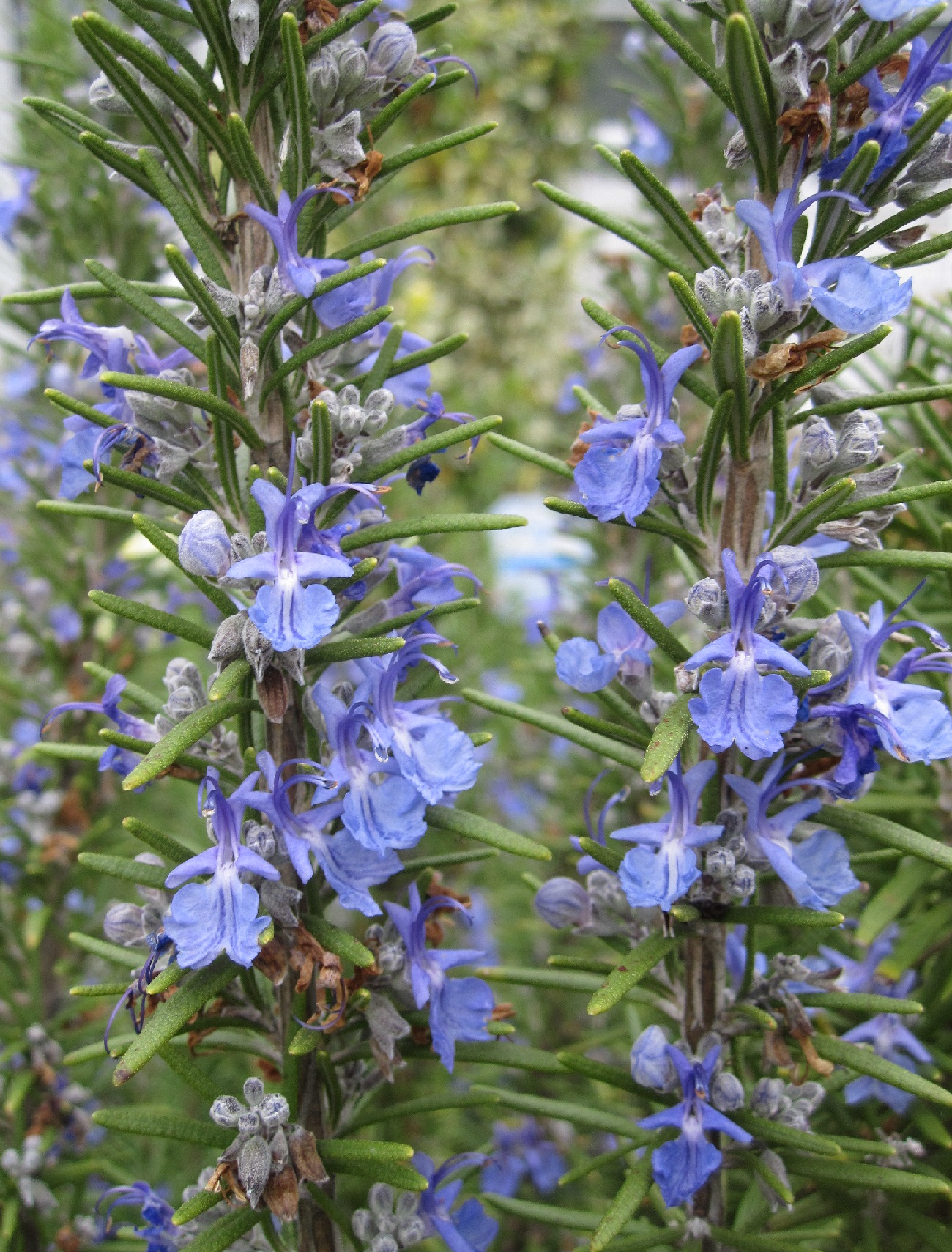
How can you decide which lavender-lookalike plants are right for you?
Growing lavender alternatives may prove to be easier for you than growing real lavender. But you don’t want to jump into this without thinking it through first. No sense in setting yourself up for failure. So before you settle on a lavender alternative, walk around your yard with a notepad and a pencil and do some observing.
Start by determining where you want to plant your faux lavender. Then, evaluate that space’s growing conditions. How much light will your lavender-lookalike have access to? Will it get full sun or partial shade? What about the soil? Is it sandy and acidic or is it loamy and neutral to alkaline? Be sure to write down your garden specs so you can keep them in mind when choosing a plant that looks like lavender. This will help maximize your chances of success.
You may not be good at growing lavender, but that doesn’t mean you have to give up on the landscape of your dreams. By choosing other plants that look like lavender and are much easier to grow, you’ll finally be able to transform your backyard into a magical garden full of purple flowers and tantalizing fragrances that you and your local bees and butterflies will love.
